Earlier this year, the Landscape Architecture Foundation (LAF) awarded more than $100,000 to 17 outstanding students for its 2020 scholarship season. The scholarships and fellowships support the next generation of designers by rewarding superior student performance, encouraging diversity, supporting original research and assisting students with unmet financial need.

One of those awards is the Steven G. King Play Environments Scholarship, which was created by Cofounder and Chairman of Landscape Structures, Steve King, FASLA, and the inventor of the continuous play concept.
The purpose of the scholarship is to recognize a student who has high potential in the design of play environments. This student must show an interest in the value of integrating playgrounds into parks, schools and other play environments and understand the significant social and educational value of play. Key qualities in the student receiving the Scholarship are creativity, openness to innovation, and a demonstrated interest in park and playground planning.
This year’s recipient of the Steven G. King Play Environments Scholarship is Allyson Fairweather. This past May, Allyson received a Master’s of Landscape Architecture from the University of Massachusetts at Amherst, and is working part-time at Wright Ostermier Landscape Architects. We were happy to sit down with Allyson earlier this summer to hear more about her interest in landscape architecture, and the project she submitted as part of her scholarship application.
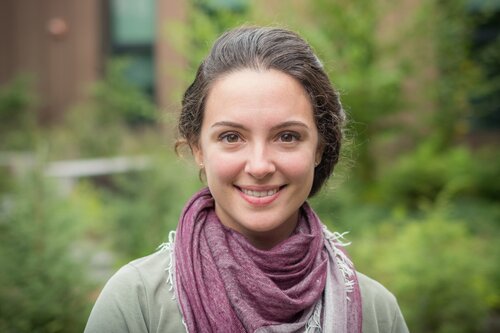
Last spring, Allyson took a research class and was interested in studying if there was a relationship between an adult affinity for nature and how much time that adult spent playing in nature as a child.
“I was excited to discover that there is evidence to suggest that children that play outdoors in nature exhibit more environmentally responsible behaviors, greater nature inquiry, great awareness of ecological process and greater environmental stewardship,” Allyson explained.
In her research, the term “nature playscape” popped up a lot. She learned that a nature playscape is an outdoor play space that is specifically designed to connect children to the natural environment and included elements such as water, plants, soil and incorporated wild life.
“As a child, I played outside all the time,” Allyson shared. “I was always on my hands and knees in the dirt playing with bugs, collecting flowers and leaves, and running around in my parents’ garden. I have more memories of that than I do hanging out on a swing set. And now as an adult, I love the outdoors. So that’s what sparked my interest in this subject.”
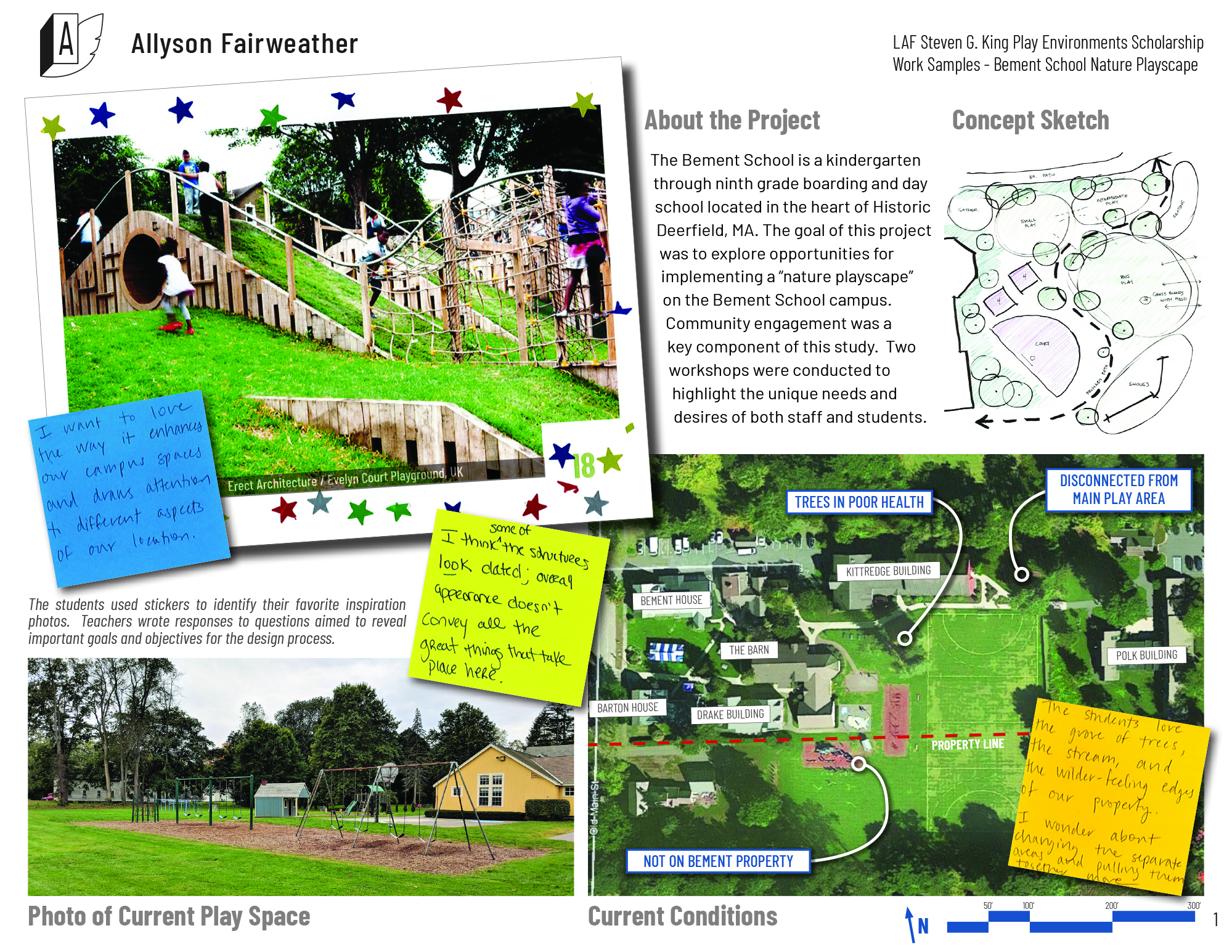
Through her connection to adjunct professor and Principal at Wright Ostermier Landscape Architects, Emily Wright, Allyson was made aware of a playground redesign project at The Bement School, a small, co-ed day and boarding school for kindergarten through grade 9 in historic Deerfield, Mass. The school, nestled below the Pocumtuck Range and flanked by the Deerfield River, has a beautiful, rural environment. Their existing playground was outdated and disconnected—scattered throughout campus. And upon further conversations, Allyson learned that the playground equipment wasn’t challenging enough for the range of students using it.
Allyson met with the playground committee—two school administrators and a teacher—a few different times. Initially, she visited the site to understand the space. Then she held two workshops—one for the playground committee and a second one for a small group of students in grades 3, 4, 5 and 7.
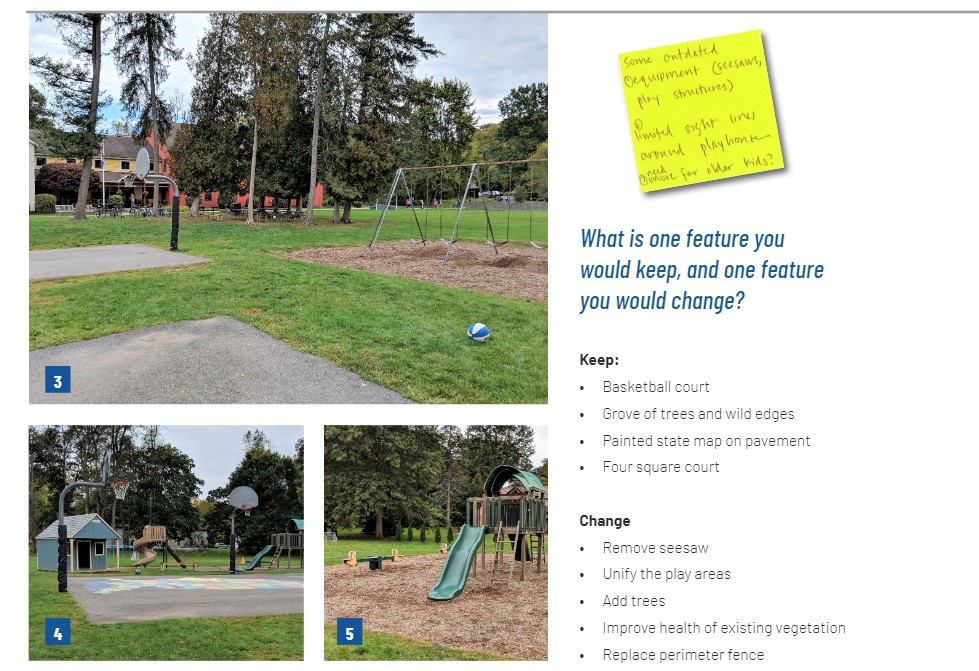
“The ultimate goal of these workshops was to understand how the play space was used, what the school community liked or didn’t like, and their vision of how it could be improved,” explained Allyson. “We prompted the adults with questions for discussion, but for the students we planned a more interactive exercise using a printed map of campus and inspirational photos. The students used stickers to vote for favorite pictures of nature play spaces.”
Allyson explained that the kids’ favorite photo was a playstructure embedded into a hillside because it appeared challenging and the students could imagine many creative ways to play there.
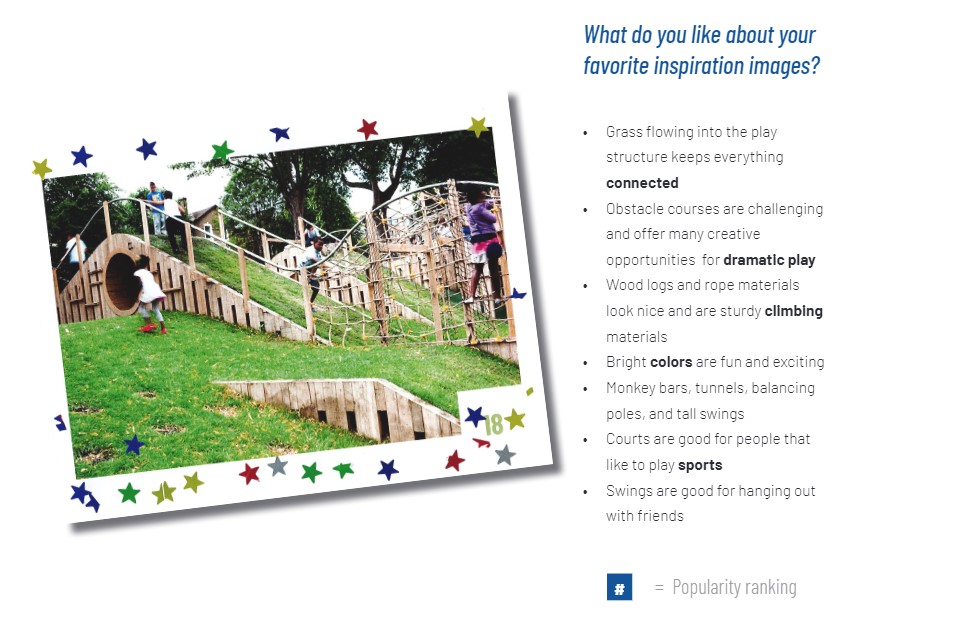
“A large part of this project was engaging with The Bement School community,” Allyson said. “They loved being a part of this project and kept asking when we were going to come back.”
After compiling all of the feedback into a report, Allyson started laying out the design of the nature playscape.
“One of the first things I did with this design was start with a continuous accessible path that circulated through the entire play space to create a boundary that unifies the play area. I tried to accommodate a range of ages and abilities in the play equipment. We imagined the playground would be created out of locally sourced black locusts because it’s really strong, sturdy wood that doesn’t splinter.”
Of course, they were tasked with blending the nature-inspired elements with more traditional playground features like foursquare and basketball courts, and swings. They included those elements but oriented them at angles that give different views of the soccer fields, the play area and the surrounding landscape.
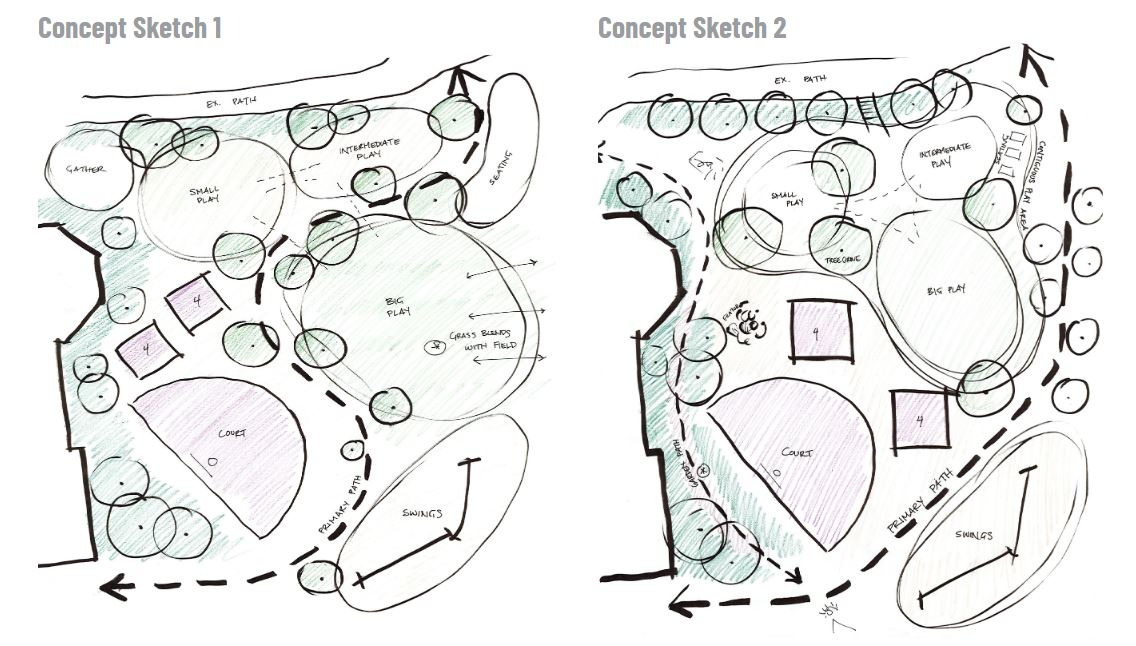
“The committee wanted to include a tire swing as it helped demonstrate one of The Bement School’s core values, collaboration,” Allyson explained. “Older kids help younger kids up onto the tire swing so it presents an opportunity for different age groups to interact and build friendships. We really appreciated their observation and positioned the tire swing in the space between two different play zones so both age groups can meet in the middle.”
In addition, it was important to include quiet areas for older kids. Picnic tables and boulders were positioned throughout the play space to offer hangout spaces. Integrated plantings, boulders and rain gardens were woven throughout the play space to extend learning to the playground.
“We presented the nature playscape to The Bement School in January 2020, and they loved it,” said Allyson. “They hope to invest in the project in the future.”
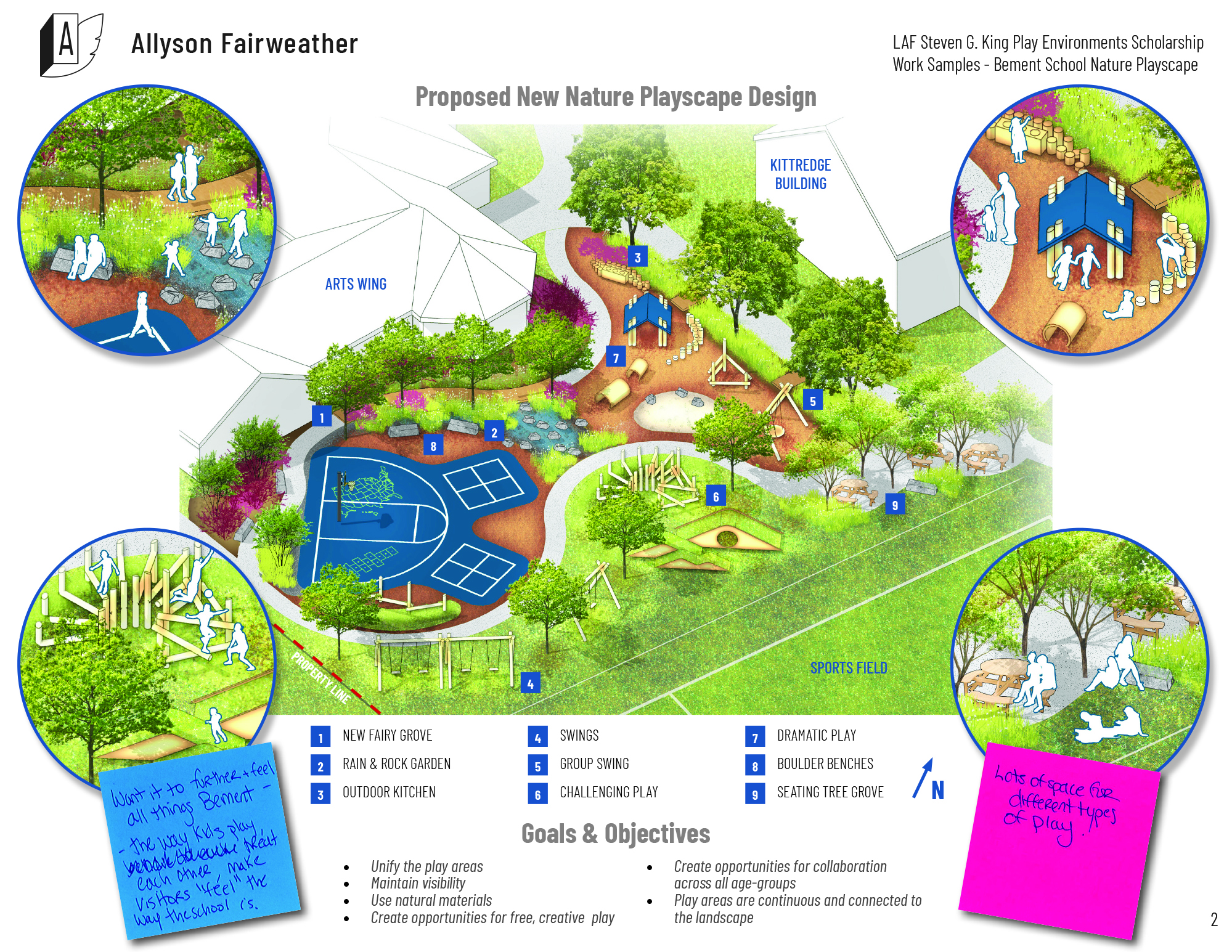
We hope to see this project come to fruition, and to see what types of playscapes Allyson completes in her future career. Congratulations, Allyson, on your scholarship!
Read more about all of the 2020 LAF Scholarship winners.
